Metal 3D printing is employed for conformal cooling channels in injection molds
As an integral part of injection molds, the water channel is located within the mold to guide the flow of cooling water, controlling temperatures, and expediting the cooling process. The mold cooling system is a crucial factor influencing the quality of injection-molded parts and production efficiency. Metal 3D printing offers a departure from traditional methods, overcoming various limitations in the fabrication of water channels. Optimizing the design allows for the direct printing of molds with intricately designed internal flow channels. This facilitates even temperature distribution within the mold, accelerating the cooling process and effectively preventing defects such as warping, deformation, cracking, flash, and bubbles in the final product. This improvement in the cooling system enhances the quality of injection-molded parts and reduces the overall molding cycle time.
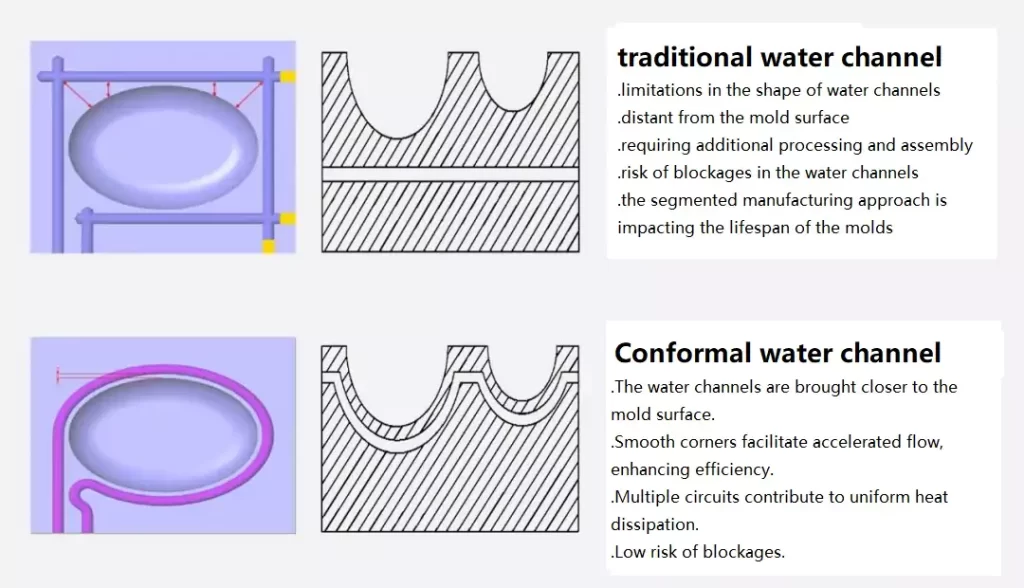
Improving cooling is a prerequisite for achieving efficient and precise injection molding.
Metal 3D printing is utilized to manufacture inserts with conformal cooling channels for molds.
Printing Material: Mold Steel (18Ni300)
Layer Thickness: 0.035mm
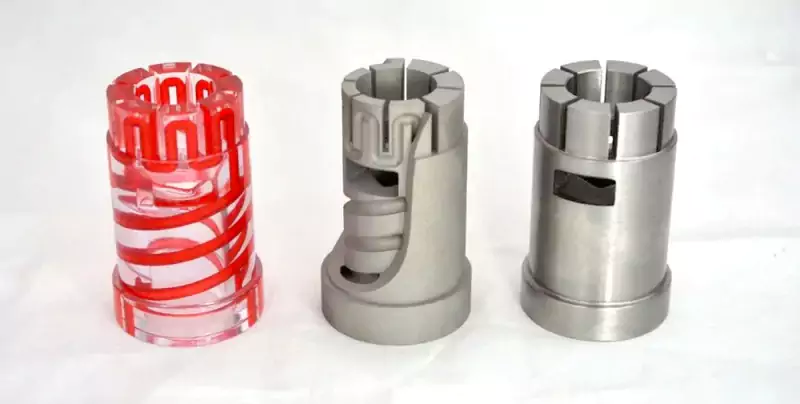
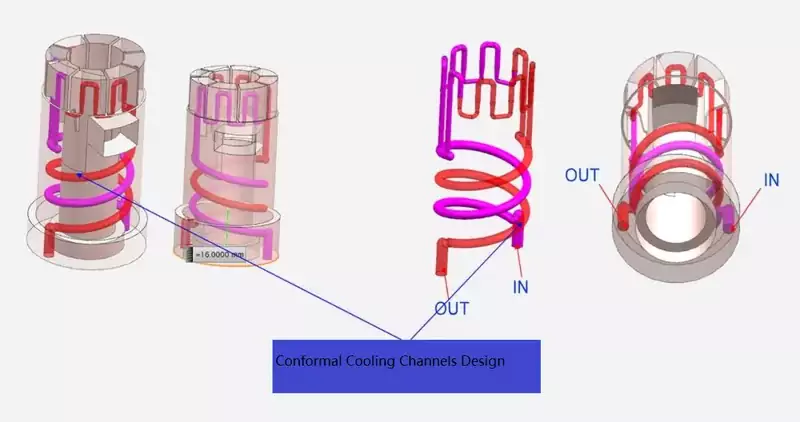
Metal 3D printing technology offers a complete set of core components
Printing Material: Mold Steel (CX)
Layer Thickness: 0.04mm
Printing Duration: 45 hours
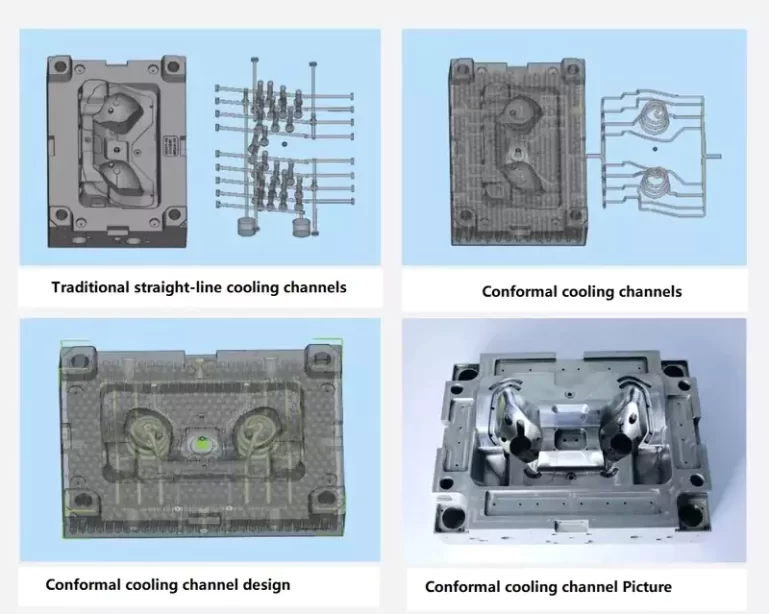
Metal 3D printing enables the automatic integration of conformal cooling molds through additive manufacturing
Using traditional subtractive manufacturing methods to produce the base and employing metal 3D printing to “grow” sections with conformal cooling channels ensures a smooth interior for the conformal cooling mold. This approach ensures seamless integration between the 3D printed sections and the base material, ultimately improving the yield of high-quality products.
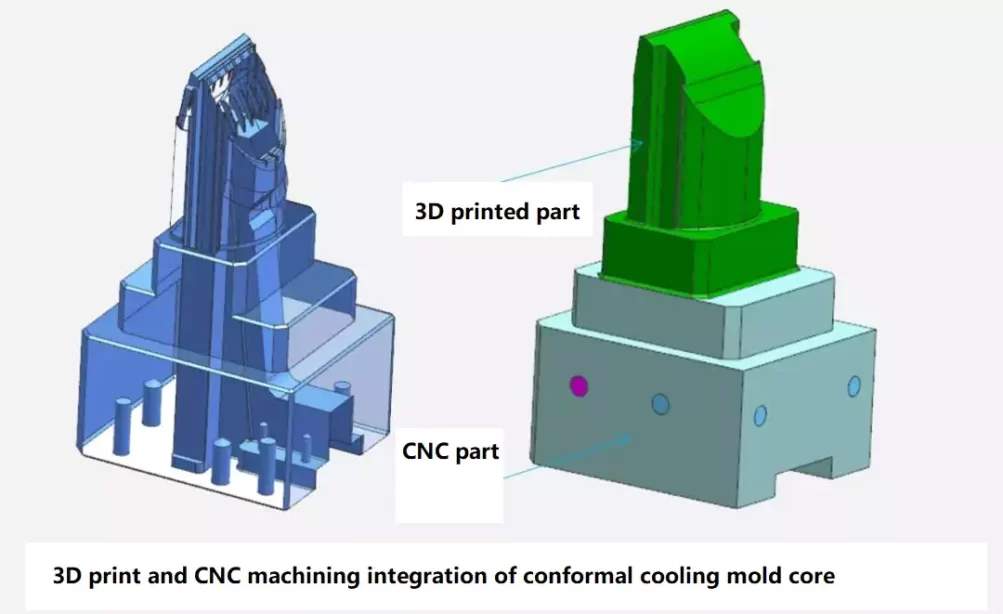
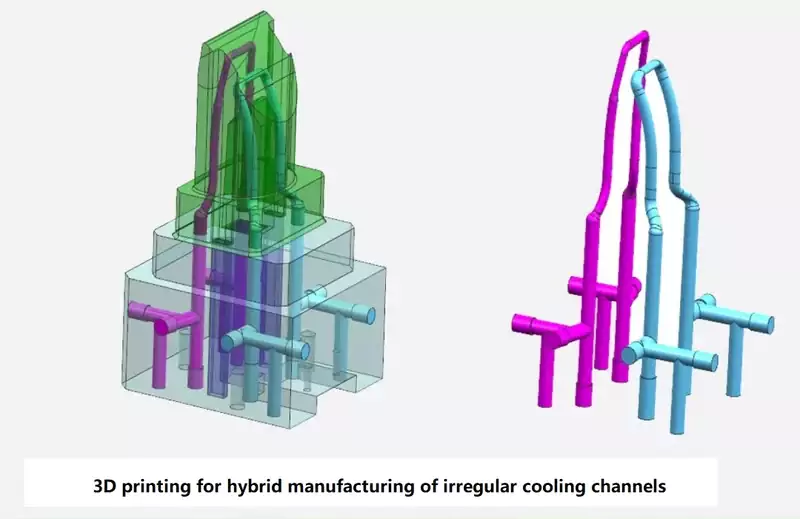
Advantages of Conformal Cooling Molds:
1 Product Quality
➯ Improved product quality with higher precision. ➯ Temperature balance reduces residual stress, minimizing warping and deformation, leading to increased yield. ➯ Enhanced surface finish of the products.
2 Cost Efficiency
➯ Reduced cooling time increases production efficiency. ➯ Shortened production cycles, decreased material consumption, and lowered manufacturing costs
3 Mold Design
➯ Design-driven manufacturing reduces the complexity and investment in the process chain. ➯ Easier achievement of mold weight reduction and smaller mold volumes compared to traditional processes.
Verification and Optimization of the Cooling System
In practical production, a well-designed and optimized conformal cooling system in injection molds can not only improve the yield of quality parts but also reduce the injection molding cycle by over 30%. By shortening the cooling time, controlling temperatures, and managing the impact on dimensional stability, surface quality, and material performance, the mold water cooling system can enhance production efficiency, reduce defect rates, improve product quality, and increase production benefits.
Stable temperature control enhances product quality and dimensional stability.
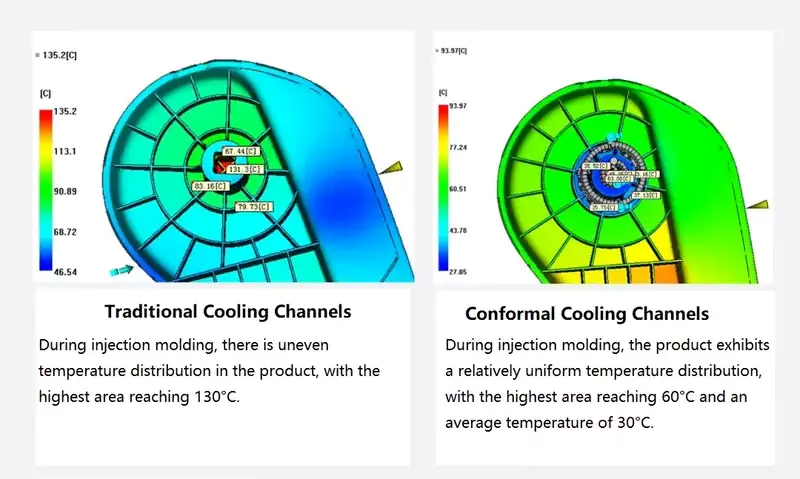
The cooling system is designed to reduce cooling time.
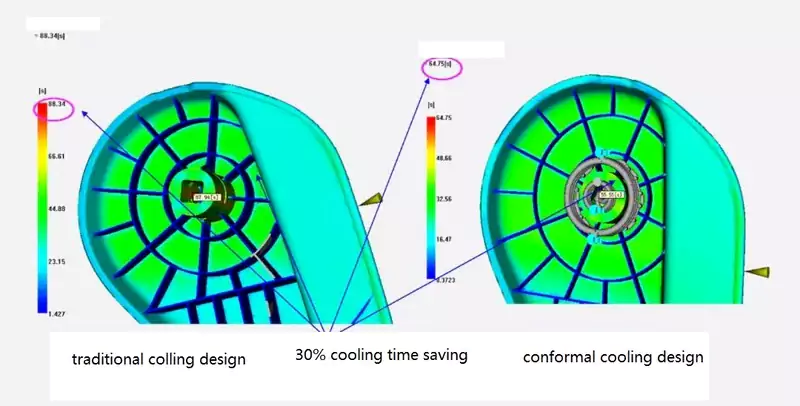
With the continuous development and widespread application of additive manufacturing technology, metal 3D printing with conformal cooling channels exhibits significant advantages in flexibility, customization, and performance. In the future, CapableMachining will continue to delve into additive manufacturing technology, leveraging years of technical expertise in mold manufacturing to provide users with high-quality metal additive manufacturing solutions. This will help mold users reduce costs, enhance quality, improve efficiency, and drive the high-quality development of the mold industry.